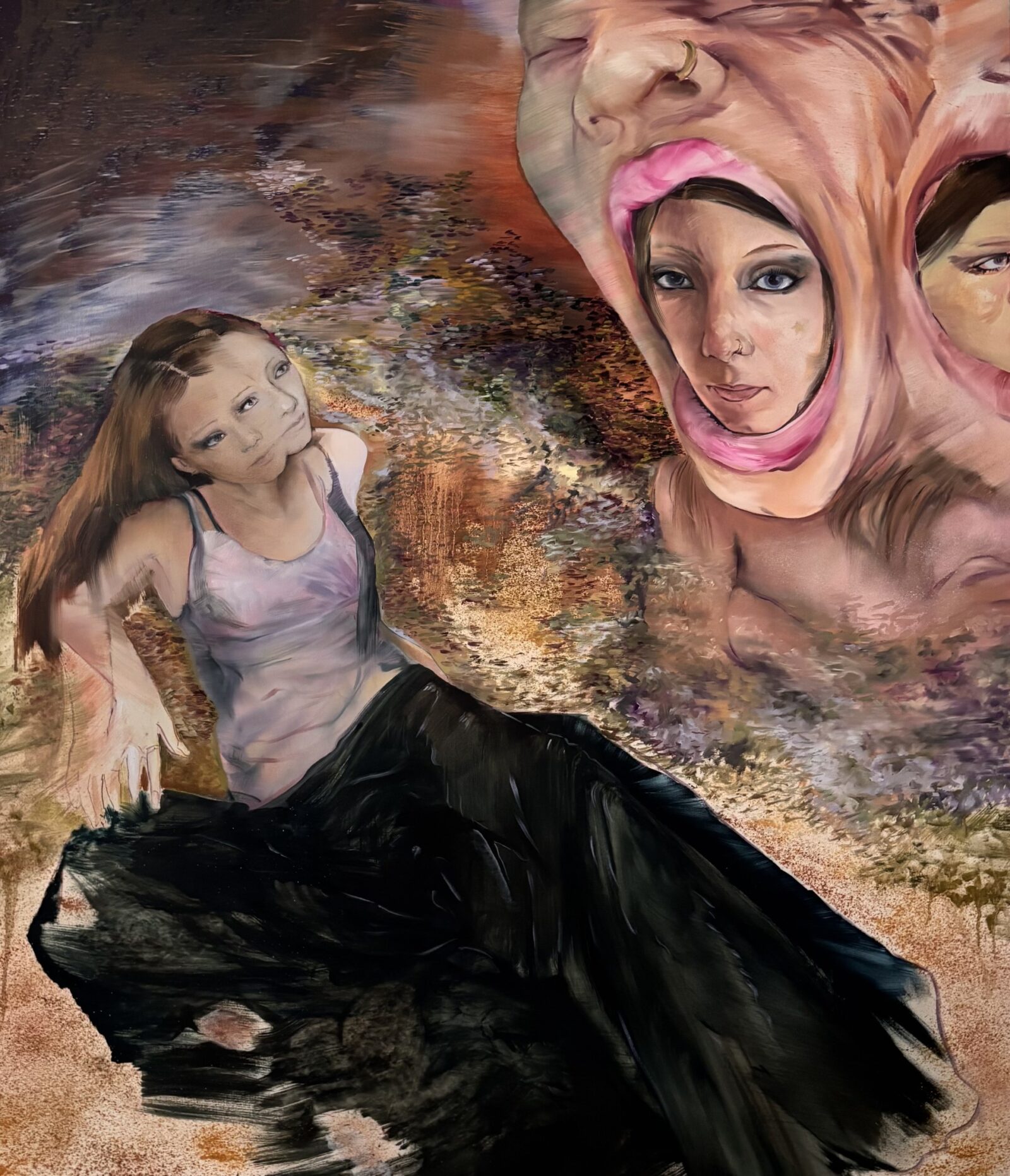Anna Czarnota is a painter born in 2000. In 2025, she completed her integrated Master’s degree at the Jan Matejko Academy of Fine Arts in Kraków. She has participated in numerous group exhibitions, including at the Zofia Weiss Gallery in Kraków, the Napiórkowska Gallery in Warsaw, and the Zbrojownia Gallery in Gdańsk, where she was one of the finalists of the Wojciech Fangor Student Painting Competition. There, she received an honorable mention from both the Mazovian Center for Contemporary Art “Elektrownia” and Krupa Gallery. In January 2025, she opened a solo exhibition at Elektrownia in Radom.
In her work, figures are often accompanied by additional elements such as heads or other external manifestations of what the portrayed individuals carry within. Heads, dogs, or transformations of the surrounding environment all serve the same purpose — to externally express, in a painterly way, emotions and internal states.
___
It’s three in the morning.
One o’clock at night, two o’clock at night, but three in the morning.
It is a symbolic hour in two ways. It is often called the “witching hour” or the “devil’s hour”: in neo-pagan beliefs, it is the moment when the boundary between the known and the unknown, the normal and the paranormal, becomes blurred.
For people suffering from insomnia, the same hour means something entirely different: a moment when we stop deceiving ourselves. The excuse of “I’m just going to bed late” gives way to sudden honesty with oneself. It is the time when day and night merge, and the awareness of the impossibility of sleep becomes clear. And then we stop lying to ourselves.
The title of the exhibition refers to this moment of honesty with oneself, not only in the context of insomnia, but also of the various thoughts that tangle in our heads during the day and in this moment of silence and calm, under the cover of night, resound loudly and forcefully, like the whimpering of a dog.
Just as three in the morning is a symbolic moment of change, so too was the year 2020, which was supposed to inaugurate a new decade with great celebration, but instead became a turning point, dividing contemporary history into what came before the pandemic and what came after.
One of the most radical changes was how we perceive the bed.
“The bed is for sleeping”, teenagers around the world had heard this for decades. It was not a place for eating or doing homework; it was supposed to serve the function of a place to rest. The pandemic, relocating all life into isolated spaces where we spent weeks on end, particularly altered the function of the bed. It became, especially for those finishing high school or studying at the time, the center of the entire world. It was a place of sleep and rest, of work, classes, and online meetings with friends, but above all, it was a safe space from which one could observe the world without letting it enter this sacral sphere.
Bed rotting became a form of self-care, but at the same time, a source of many problems: self-isolation and sleep disorders.
Anna Czarnota addresses in her practice themes of honesty with oneself, the thoughts that haunt us, and the meaning of rest in the 21st century, in the context of the constant bombardment of stimulating information (doomscrolling) and the blurring of the boundary between work and home.
Doomscrolling and bed rotting, two inseparable phenomena, are interesting not only from an etymological perspective, evoking grotesque visions of the end of the world and decomposition, but also from the perspective of the traditional symbolism of the bed in art, especially when, as in Anna’s work, they depict women in beds and in positions of rest.
A man in a bed was usually shown as bedridden, wounded, or dying, whereas a woman in bed was meant to symbolize eroticism and submission.
Fortunately, both times and art have changed, and with them also the symbolism of the bed. In Anna’s works, the bed, the sofa, and the poses of the figures speak about what rest and a sense of safety look like in the seeming calm of one’s own home, apartment, or bedroom. They also directly relate to the profession of the artist, which, like many independent professions, is a 24/7 job, always occupying a significant part of one’s thoughts regardless of place or time.
Physical rest contrasts with the lack of intellectual rest. Days when we feel tired but at the same time unsatisfied with the work we’ve done loop endlessly. The fragile boundary between relaxation and overwork, between calm and overstimulation, becomes tangled. And so, again, it is three in the morning.


















